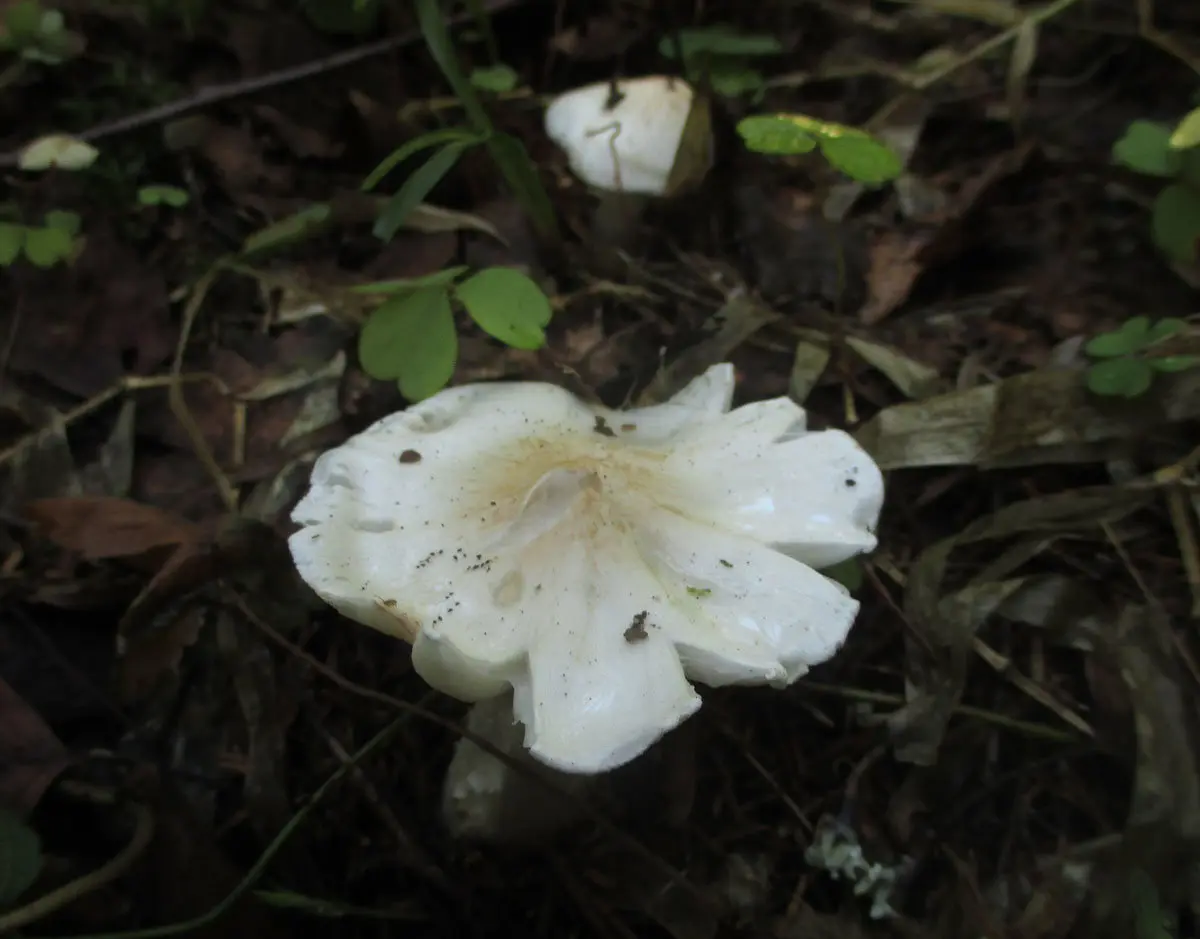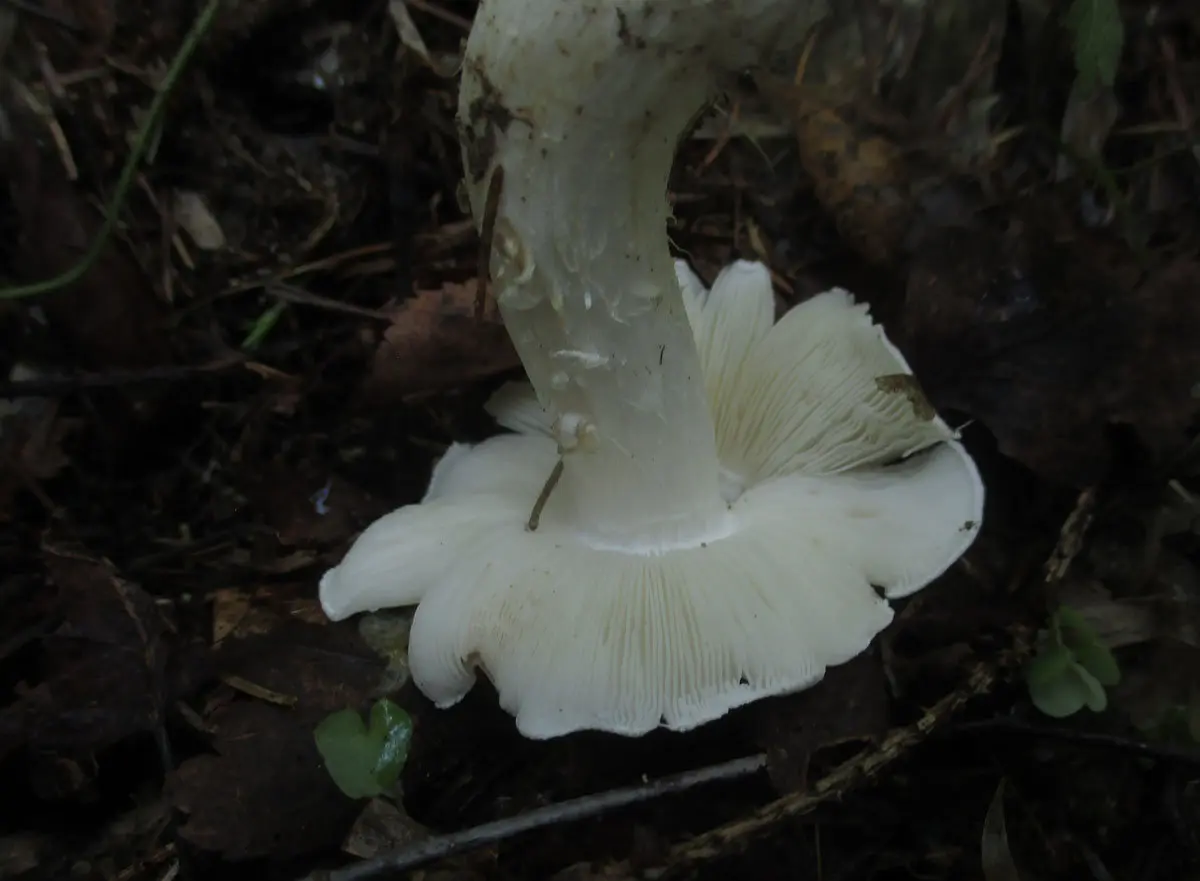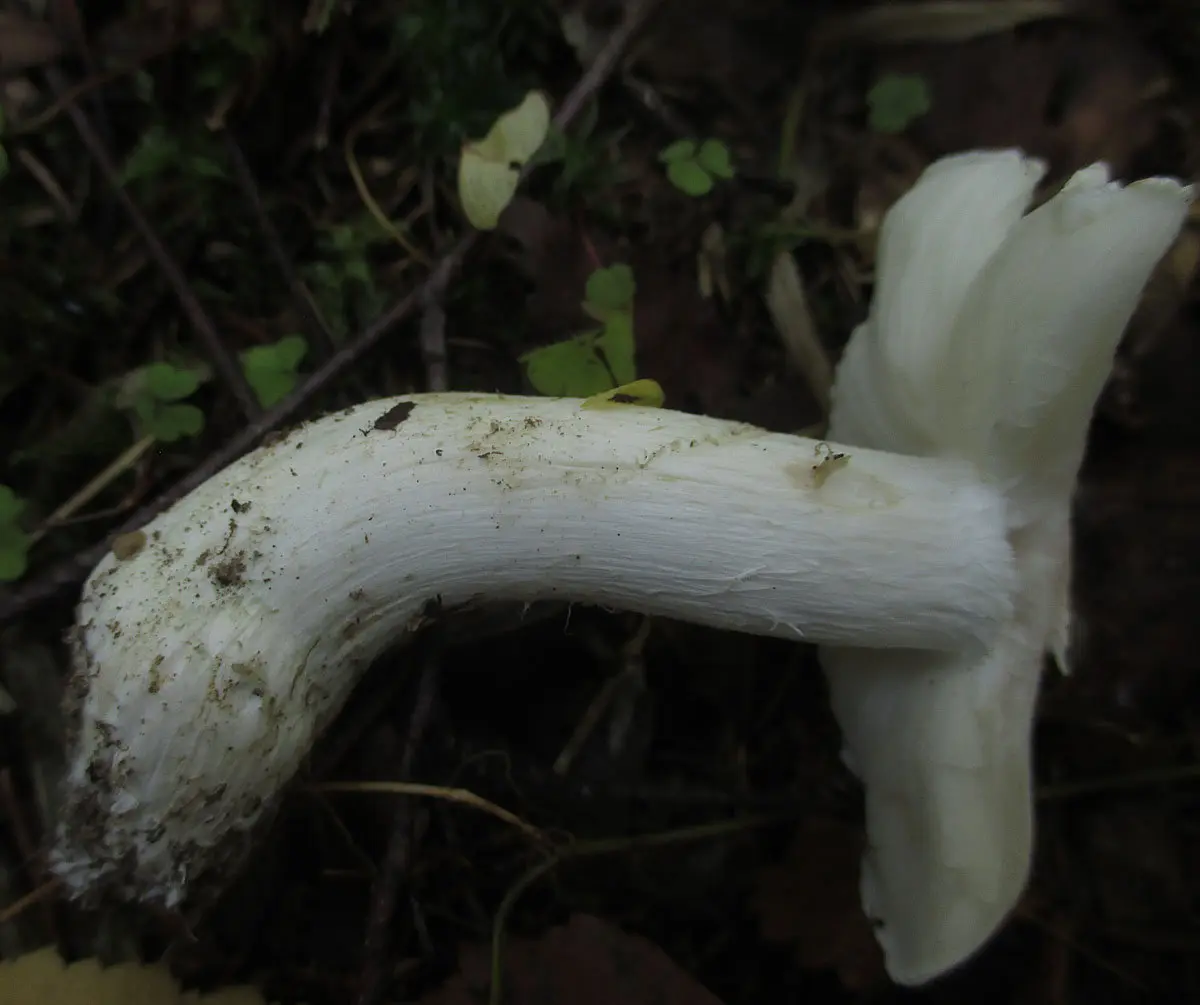Humpbacked rowan (Tricholoma umbonatum)
- Division: Basidiomycota (Basidiomycetes)
- Subdivision: Agaricomycotina (Agaricomycetes)
- Class: Agaricomycetes (Agaricomycetes)
- Subclass: Agaricomycetidae (Agaricomycetes)
- Order: Agaricales (Agaric or Lamellar)
- Family: Tricholomataceae (Tricholomovye or Ryadovkovye)
- Genus: Tricholoma (Tricholoma or Ryadovka)
- Type: Tricholoma umbonatum

The specific epithet of Tricholoma umbonatum Clémençon & Bon, in Bon, Docums Mycol. 14(no. 56): 22 (1985) comes from Lat. umbo – which means “hump” in translation. And, indeed, the “humpback” of the cap is characteristic of this species.
head 3.5-9 cm in diameter (up to 115), conical or bell-shaped when young, conical to prostrate when aged, often with a more or less pointed hump, smooth, sticky in wet weather, shiny in dry weather, more or less pronounced radially – fibrous. In dry weather, the cap often breaks radially. The color of the cap is whitish closer to the edges, noticeably darker in the center, olive-ocher, olive-brown, greenish-yellowish, greenish-brown. Radial fibers are low contrast.
Pulp whitish. Smell from weak to floury, may have unpleasant undertones. The smell of the cut is noticeably floury. The taste is floury, maybe a little nasty.
Records notched-grown, rather wide, frequent or medium-frequent, white, often with an uneven edge.

spore powder white.
Споры hyaline in water and KOH, smooth, mostly ellipsoid, 4.7-8.6 x 3.7-6.4 µm, Q 1.1-1.6, Qe 1.28-1.38
Leg 5-10 cm long (according to [1] up to 15), 8-20 mm in diameter (up to 25), white, yellowish, cylindrical or tapering towards the bottom, often deeply rooted, may have a pinkish-brownish color at the base. Usually, it is expressed longitudinally fibrous.

The humpbacked rowweed grows from late August to November, is associated with oak or beech, prefers clay, and according to some sources, calcareous soils. The fungus is quite rare.
- Row white (Tricholoma album), Row fetid (Tricholoma lascivum), Rows of the common plate (Tricholoma stiparophyllum), Rows of Tricholoma sulphurescens, Tricholoma boreosulphurescens, Rows of smelly (Tricholoma inamoenum) They are distinguished by a pronounced unpleasant odor, the absence of a fibrous structure of the cap surface and greenish or olive hues. They do not have characteristic humps on the hat. Of these species, only T.album, T.lascivum and T.sulphurescens can be found nearby, as associated with oak and beech, the rest grow with other trees.
- Row whitish (Tricholoma albidum). This species has a not very clear status, like, today, it is a subspecies of the silver-gray row – Trichioloma argyraceum var. albidum. It is distinguished by the absence of greenish and olive tones in the hat, and yellowing in places of touch and damage.
- Pigeon row (Tricholoma columbetta). It is distinguished by the absence of olive and greenish tones in the cap, does not have a “hump”, does not have a noticeable darkening in the center of the cap. Phylogenetically, it is the closest species to this row.
- Row different (Tricholoma sejunctum). According to [1], this type is easily confused with the given one. It is distinguished by the absence of such a pronounced hump on the hat, and a non-rooting stem. However, in my opinion, the mushrooms are not at all similar in color and in the contrast of colored fibers on the cap. Is it possible that T.sejunctum is so light, or T.umbonatum is so brightly colored?
Edibility is unknown as the mushroom is quite rare.









